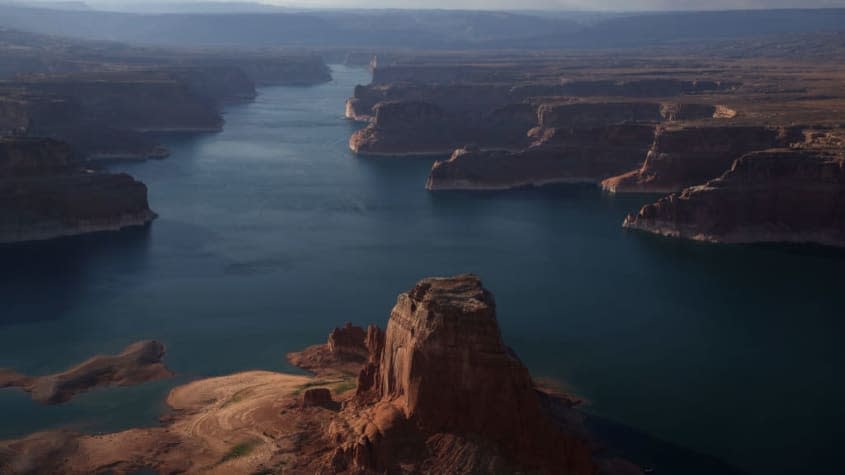Federal officials impose emergency water cuts for Arizona and Nevada

With water levels at Lake Mead and Lake Powell continuing to drop, the U.S. Bureau of Reclamation announced on Tuesday new water restrictions for Arizona, Nevada, and Mexico.
Two months ago, the seven states that rely on water from the Colorado River — California, Arizona, Nevada, Colorado, Wyoming, New Mexico, and Utah — were tasked with coming up with plans to reduce water use by 2 million to 4 million acre-feet, the Los Angeles Times reports. The talks have been at times contentious, due to the states all having different interests, and an agreement has yet to be reached.
Tanya Trujillo, the Interior Department's assistant secretary for water and science, said on Tuesday that a Tier 2 shortage has been declared for 2023, a first for the Colorado River. This means Arizona's annual water apportionment will be reduced by 21 percent, Nevada's by 8 percent, and Mexico's by 7 percent.
Lake Mead and Lake Powell are the Colorado River's two main reservoirs, and their water levels are at historic lows — both are nearly three-fourths empty, the Times says. The causes include climate change, chronic overuse, and the dry climate, and Trujillo said "in order to avoid a catastrophic collapse of the Colorado River System and a future of uncertainty and conflict, water use in the [Colorado River] Basin must be reduced."
Arizona and Nevada have already gone through one round of water reductions, and lawmakers are calling on other states to do more about the crisis. "Arizona has offered to put more wet water on the table than any other state, where other parties have offered a fraction of the same amount," Sen. Mark Kelly (D-Ariz.) wrote in a letter to Secretary of the Interior Deb Haaland. Read more at the Los Angeles Times.
You may also like
The debate over the Catholicism 'trend'
Starbucks accuses labor board of unfairly helping pro-union workers
Senate Republican campaign arm cuts ad spending in at least 4 key battleground races

 Yahoo Movies
Yahoo Movies 
